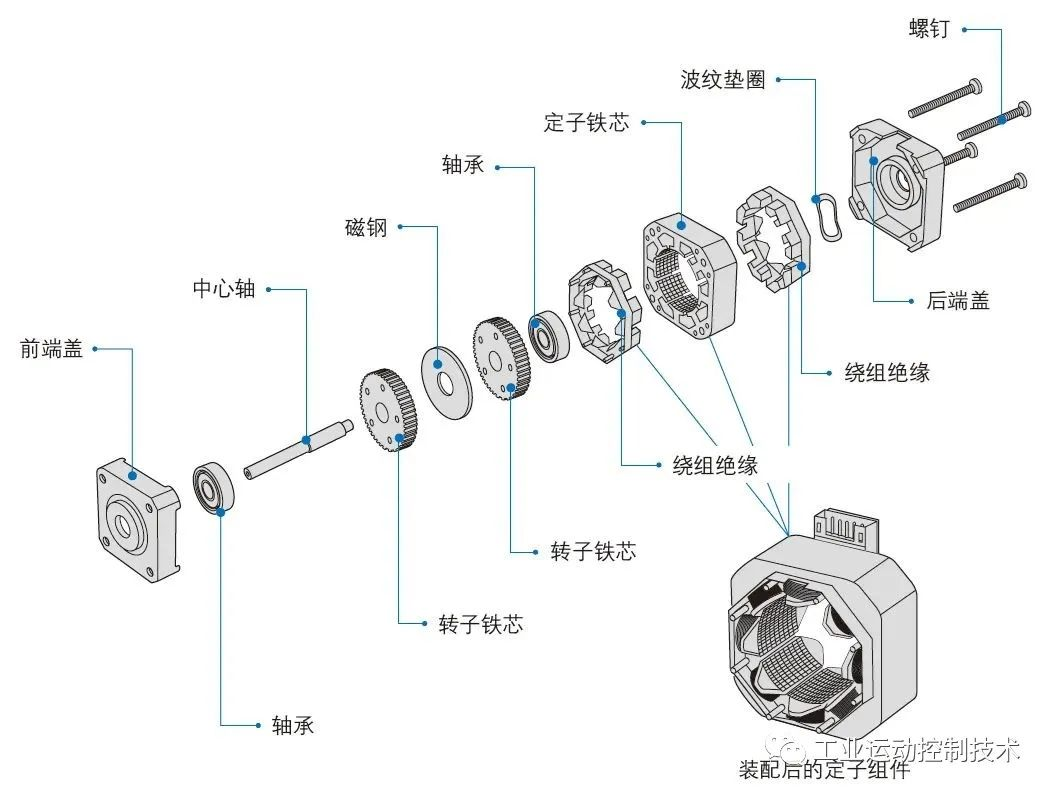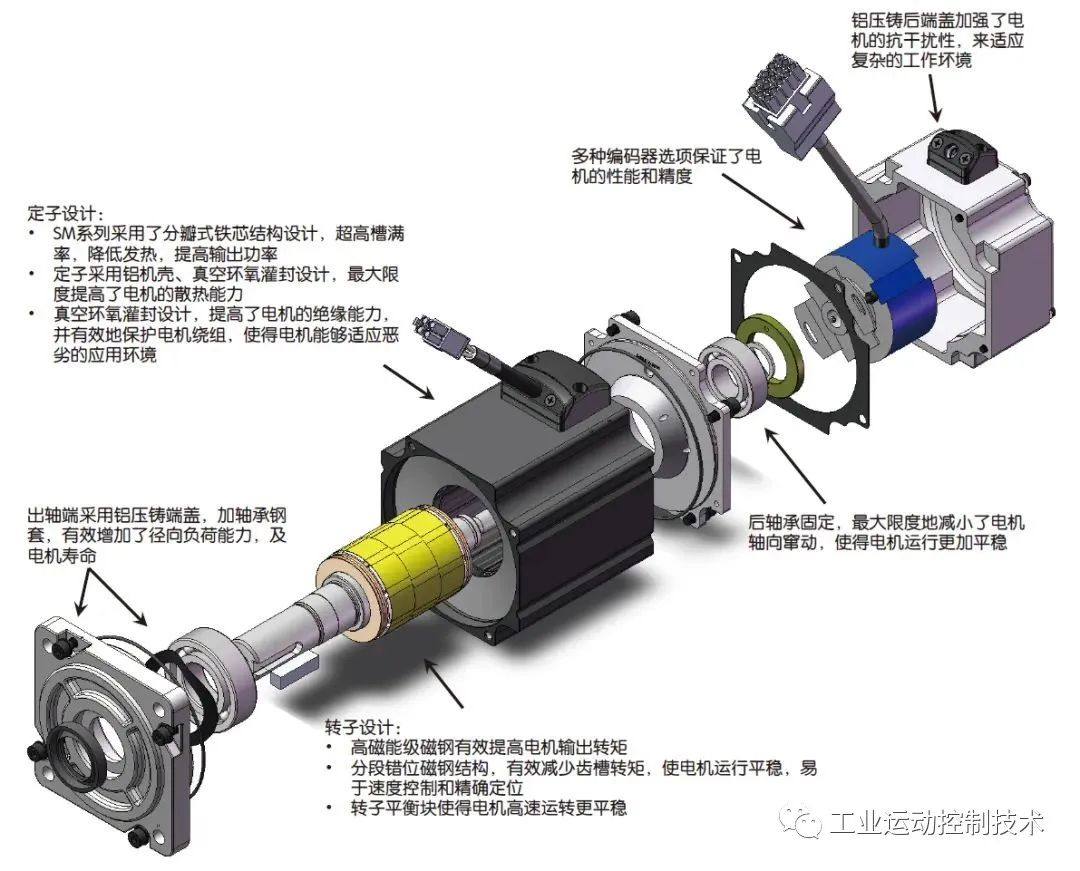The main differences between stepper motors and servo motors
Various motors are required in many fields , including the well-known stepper motors and servo motors. However, for many users, they do not understand the main differences between the two motors, so they always don't know how to choose. So, what are the main differences between stepper motors and servo motors?
basic structure

▲ Stepper motor structure diagram

▲ Servo motor structure diagram
Their differences are briefly described below:
1. Working principle
The two types of motors are very different in principle. The stepper motor is an open-loop control element stepper motor device that converts electrical pulse signals into angular displacement or linear displacement. Check out the working principle of the stepper motor.
The servo mainly relies on pulses for positioning. The servo motor itself has the function of emitting pulses. Therefore, every time the servo motor rotates through an angle, it will emit a corresponding number of pulses. In this way, it forms a response to the pulses received by the servo motor, or is called a closed loop. In this way, the system It will be clear how many pulses are sent and how many pulses are received back, so that the rotation of the motor can be precisely controlled to achieve precise positioning.
2. Control accuracy
The precision of the stepper motor is generally achieved through the precise control of the step angle. There are many different subdivision gears for the step angle, which can realize precise control.
The control accuracy of the servo motor is guaranteed by the rotary encoder at the rear end of the motor shaft . Generally, the control accuracy of the servo motor is higher than that of the stepping motor.
3. Speed and overload capacity
Stepper motors are prone to low-frequency vibration when running at low speeds. Therefore, when stepper motors work at low speeds, damping technology is usually required to overcome the low-frequency vibration phenomenon, such as adding dampers to the motor or using subdivision technology on the driver . , while the servo motor does not have this phenomenon. Its closed-loop control characteristics determine that it maintains excellent performance during high-speed operation. The torque-frequency characteristics of the two are different. Generally, the rated speed of the servo motor is larger than that of the stepper motor.
The output torque of stepper motors will decrease as the speed increases, while servo motors output constant torque, so stepper motors generally have no overload capability, while AC servo motors have stronger overload capabilities.
4. Operation performance
Stepper motors are generally open-loop controlled. When the starting frequency is too high or the load is too large, they will lose steps or stall. Therefore, you need to deal with the speed problem or add encoder closed-loop control when using them. Check what closed-loop steps are. Enter the motor. The servo motor uses closed-loop control, which is easier to control and there is no out-of-step phenomenon.
5. Cost
Stepper motors have advantages in cost performance. To achieve the same function, the price of servo motors is higher than that of stepper motors with the same power. The advantages of servo motors such as high response, high speed and high precision determine the high price of the product . , which is unavoidable.
To sum up, there are big differences between stepper motors and servo motors in terms of working principles, control accuracy, overload capacity, operating performance and cost. However, both have their own advantages. If users want to choose between them, they need to combine their actual needs and application scenarios.



























 XINDA
XINDA